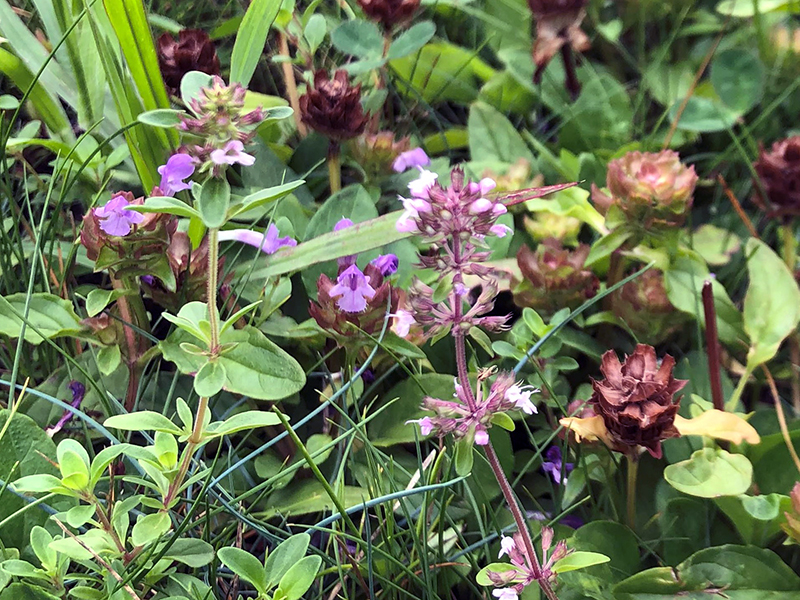Talking Plants
Jillian Patrie | University of Minnesota Yard and Garden Extension
Cool nights and warm days are ideal for seeding lawns and other yard maintenance. Whether you are seeding a new lawn, or just patching up some bare spots, Mid-August to mid-September is the perfect time to check this project off your list. Here are a few things to consider when spreading out grass seed or sodding this fall.
Choose a turf mix that is appropriate for the spot and climate. There are many seed varieties out there and it can be challenging to pick the right one. Think about the sun exposure that the site would receive throughout the day and consider our Northern climate. In most cases a good mix for Minnesota is a combination of Kentucky bluegrass, fine fescue and perennial ryegrass. Prepare your site by adding topsoil to bare spots, lightly rake the seed into the soil and water to a depth of 4-6” initially and then water lightly and frequently until germination. Continue to water as needed.
For more information about establishing lawns visit https://extension.umn.edu/lawn-care/seeding-and-sodding-home-lawns
Not into traditional turf grass lawns, bee lawns are the new turf grass alternative! Fall is a great time to plant bee lawn mixes too. Bee lawns are mixtures of turf grasses and flowers that provide food and protection for pollinators. Bee lawns are also low maintenance, using less water, fertilizer and pesticides. Many bee lawns are low growing, meaning less or no mowing is needed.
Seeding a bee lawn is done similarly to seeding traditional turf grass, you can also overseed (cast seed) into an existing lawn. Fine Fescues are common turf grass options for a bee lawn installation, fescues require little to no water, fertilizer or pesticides and work well with bee lawn flowers. Dutch white clover, self-heal and creeping thyme are three easy bee lawn flowers to start off with. There are existing bee lawn flowers that you may consider keeping around too, such as common violet and dandelion. For more information on establishing a bee lawn visit https://extension.umn.edu/landscape-design/planting-and-maintaining-bee-lawn
Fall is also a good time to plant trees, shrubs and perennial flowers, cooler temperatures reduce the impact of transplant shock many plants experience during planting. Splitting and planting peonies and iris is best at this time too. Tulips, daffodils and spring blooming bulbs are traditionally planted in the fall as well. For more information on fall bulb planting visit https://extension.umn.edu/how/planting-bulbs-tubers-and-rhizomes#:~:text=In%20places%20with%20cold%20climates,get%20them%20into%20the%20soil.
For questions about this article or local yard and gardening questions, contact your Clay County Horticulture Extension Educator at 218-299-7338 or by email at patri350@umn.edu.


